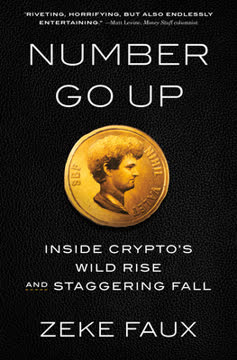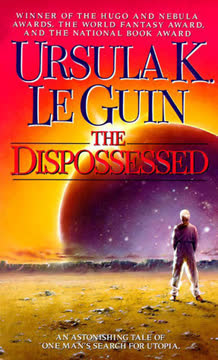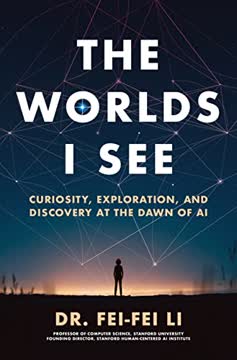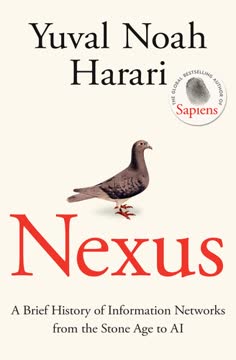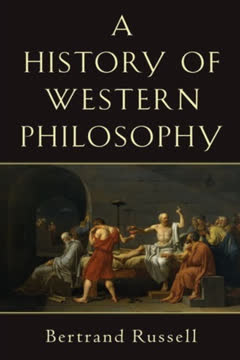가지 주요 요점
1. 공감은 인류 역사를 잇는 보이지 않는 실
공감 의식의 진화는 인류 역사의 본질적인 이야기임에도 불구하고, 역사학자들로부터 충분한 주목을 받지 못해왔다.
인간 본질로서의 공감. 공감은 주변적인 특성이 아니라 인간 본성과 사회 발전의 핵심에 자리 잡고 있다. 타인의 감정과 경험을 마치 자신의 것처럼 이해하고 반응할 수 있게 하는 생물학적 메커니즘이다. 이러한 정서적 연결 능력은 인류 사회, 제도, 문화적 서사를 형성하는 원동력이 되어왔다.
역사적 간과. 전통적인 역사 서술은 주로 갈등, 권력 투쟁, 기술 발전에 초점을 맞추어 공감이 인류사에서 차지하는 중요한 역할을 간과해왔다. 그러나 자세히 살펴보면 공감 의식은 꾸준히 진화하고 확장되어 왔으며, 점점 더 복잡한 사회 구조를 가능하게 하고 광범위한 협력을 촉진해왔다.
역설적 관계. 공감의 발달은 인류 문명과 에너지 소비의 성장과 밀접하게 연결되어 있다. 사회가 복잡해지고 상호 연결될수록 더 넓은 공감 참여의 기회를 만들어내지만, 이러한 진보는 종종 환경 착취의 증가를 수반하여 공감 성장과 생태적 지속 가능성 사이에 역설적인 긴장을 낳는다.
2. 에너지 체제와 소통 혁명이 공감 의식을 형성하다
아이러니하게도, 우리의 공감 의식 증가는 지구의 에너지와 자원을 점점 더 많이 소비함으로써 지구 건강의 심각한 악화를 초래했다.
기술적 촉매. 역사적으로 에너지 체제와 소통 기술의 주요 전환은 인간 공감의 확장에 결정적 역할을 해왔다. 이러한 발전은 사회 조직과 상호작용의 새로운 가능성을 열어주어, 사람들이 더 먼 거리와 다양한 집단과 연결될 수 있게 했다.
주요 에너지 전환:
- 신석기 농업 혁명
- 수리 문명
- 중세의 수력 및 풍력
- 산업혁명(석탄과 증기)
- 제2차 산업혁명(석유와 전기)
소통 혁명:
- 문자 발명
- 인쇄술 발명
- 전신과 전화
- 라디오와 텔레비전
- 인터넷과 디지털 기술
의식의 확장. 각 에너지-소통 복합체는 인간 인식과 상호작용의 범위를 넓혀 점점 더 큰 규모에서 공감 참여의 기회를 창출했다. 이 과정은 도덕적 범위의 점진적 확장과 더 포괄적인 사회·정치 구조의 발전으로 이어졌다.
엔트로피적 도전. 공감 의식의 확장은 에너지 소비와 자원 착취의 증가와 밀접히 연관되어 있다. 이는 공감 성장과 환경 지속 가능성 사이에 근본적인 긴장을 만들어내며, 인류 문명의 미래에 중대한 도전 과제를 제기한다.
3. 자아와 개성의 등장은 공감 확장의 원동력
진정한 인간다움은 보편적 공감을 지니고, 그에 따라 자신의 몸으로 경험하는 도덕적 적절성을 갖는 것이다.
자아의 출현. 뚜렷한 자아감과 개별 정체성의 발달은 공감 진화에 결정적이었다. 자신만의 독특한 경험과 내면 세계를 인식하게 되면서 타인의 경험을 더 깊이 상상하고 공감할 수 있는 능력을 갖추게 되었다.
역사적 진전:
- 초기 인류 사회의 부족 의식
- 수리 문명에서 초기 개인주의 등장
- 중세 유럽의 도시 생활과 상업 성장
- 르네상스 인문주의와 ‘인간 발견’
- 계몽주의의 개인 권리와 이성 강조
- 현대 심리학의 자아 이해
개성의 역설. 개인주의의 등장은 이기심을 조장하는 듯 보이지만, 사실 더 정교한 공감 형태를 위한 인지적·정서적 토대를 마련한다. 자신을 독립된 존재로 인식함으로써 타인의 독특한 관점과 경험을 더 잘 이해할 수 있게 된다.
공감의 다리 역할. 개성이 뚜렷해질수록 공감은 자아와 타인을 잇는 중요한 다리가 된다. 이는 개인 정체성을 유지하면서도 사회적 연결을 유지하고 더 크고 복잡한 사회를 형성할 수 있게 한다.
4. 공감은 인간 발달의 뚜렷한 단계를 거쳐 진화한다
공감은 결국 우리가 ‘존재’라 부르는 모호한 개념에 대해 깊은 경외심을 느끼는 감정이다.
발달 단계. 공감은 고정된 특성이 아니라 개인과 사회 차원에서 뚜렷한 발달 단계를 거치며 진화한다. 이 과정은 점점 더 정교한 정서 이해와 도덕적 추론을 가능하게 한다.
개인 공감 발달:
- 원시적 공감 고통(영아기)
- 자기중심적 공감(유아기)
- 관점 수용(어린이)
- 추상적 공감(청소년 및 성인)
- 보편적 공감(성숙한 성인)
사회적 공감 진화:
- 부족 공감(초기 인류 사회)
- 종교/문화 공감(초기 문명)
- 국가/민족 공감(국가)
- 지구촌 공감(현대 상호 연결 세계)
- 생물권 의식(신생 생태 의식)
확장하는 도덕적 범위. 공감이 발달함에 따라 개인과 사회는 도덕적 관심의 범위를 더 큰 집단과 다양한 존재로 확장한다. 이 확장은 도덕적 진보, 사회 개혁, 보편적 인권 발전의 원동력이 되어왔다.
도전과 한계. 공감은 지속적 성장 가능성을 지니지만, 인지 편향, 내집단 선호, 미래 세대나 생물권 같은 추상적·원거리 존재에 대한 공감 확장의 어려움 등 한계와 도전에 직면해 있다.
5. 신학적 의식은 첫 번째 대규모 공감 도약을 이끌다
기독교의 도래가 어린이들에게 ‘암흑시대’의 종말을 알린 것은 아니었지만, 다소 덜 암울한 전망의 시작이었을지도 모른다.
종교적 변혁. 일신교, 특히 기독교의 출현은 공감 의식에 중대한 도약을 가져왔다. 이 신앙 체계는 보편적 사랑과 자비의 개념을 도입하여 부족이나 민족 경계를 넘어 도덕적 관심을 확장했다.
주요 공감 혁신:
- 인류 전체를 아우르는 보편적 신 개념
- 개인의 가치와 존엄성 강조
- 원수를 사랑하라는 가르침
- 친족과 부족을 넘어선 도덕적 범위 확장
- 황금률과 같은 보편 윤리 원칙 발전
제도적 역설. 종교 기관은 종종 갈등과 억압의 원천이 되었지만, 그 근본적인 영적 메시지는 공감 이상을 지속적으로 촉진했다. 제도적 권력과 공감 가르침 사이의 긴장은 종교 역사에서 반복되는 주제다.
유산과 한계. 신학적 의식이 촉발한 공감 도약은 이후 도덕적·사회적 발전의 중요한 토대를 마련했으나, 위계적 사회 구조, 배타적 관행, 기존 권력 역학과 공감 이상 간의 완전한 조화 불가능성에 의해 제한되었다.
6. 인쇄 혁명과 인문주의가 공감의 경계를 넓히다
인쇄 매체는 개인주의를 강화하는 한편, 오래된 공동체 유대를 느슨하게 했다. 그러나 동시에 공간과 시간을 넘어선 새로운 형태의 연대와 연결을 만들어냈다.
변혁적 기술. 15세기 인쇄술의 발명은 소통과 지식 전파에 혁명을 일으켜 인간 의식과 사회 조직에 깊은 영향을 미쳤다.
인쇄가 가져온 공감 효과:
- 문해력과 교육의 확산
- 언어의 표준화
- 새로운 사상과 관점의 전파
- 공유된 텍스트를 통한 ‘상상된 공동체’ 형성
- 내성적 독서와 글쓰기 관행의 발전
인문주의 각성. 인쇄 혁명은 개인의 존엄성, 이성 탐구, 다양한 인간 경험의 가치를 강조하는 인문주의 운동과 맞물려 공감의 경계를 확장했다. 이는 타문화와 관점에 대한 호기심을 촉진했다.
역설적 효과. 인쇄 기술은 개인주의를 강화하고 전통적 공동체 유대를 약화시켰지만, 동시에 새로운 형태의 연결과 공유 정체성을 창출했다. 이러한 새로운 연대는 근접성이나 혈연이 아닌 공유된 사상과 관심사를 기반으로 하여 더 광범위한 공감과 사회 조직의 토대를 마련했다.
7. 현대 가족 구조가 공감 성장을 촉진하다
동반자적 결혼과 사랑에 기반한 결혼은 쉽게 또는 빠르게 자리 잡지 않았으며, 단계적으로 나타났다.
가족 구조의 변화. 확대 가족 중심에서 동반자적 결혼에 기반한 핵가족으로의 전환은 사회 조직과 공감 발달에 중대한 변화를 가져왔다.
주요 변화:
- 애정 어린 결혼의 증가
- 자녀 양육과 교육에 대한 관심 증대
- 아동기를 독립된 생애 단계로 인식
- 가족 내 정서적 유대 강조 강화
- 가부장적 권위에서 보다 평등한 관계로의 전환
공감의 온상. 정서적 친밀감과 개인 발달을 중시하는 현대 가족 구조는 공감 능력 배양에 중요한 환경이 되었다. 애정 어린 가정에서 자란 아이들은 더 정교한 공감 능력을 갖추기 쉬웠다.
사회적 파급 효과. 가족 역학의 변화는 개인 권리, 성 역할, 사회적 책임에 대한 인식에 영향을 미쳐, 공감 의식이 가족 단위를 넘어 더 넓은 사회 영역으로 확장되는 토대를 마련했다.
8. 공감과 엔트로피는 역설적 긴장 속에 존재한다
우리는 멸종 위협에 직면한 세계에서 생물권 의식을 향한 경주를 벌이고 있다.
근본적 딜레마. 공감 의식의 발달은 인류 문명과 에너지 소비의 성장과 불가분하게 연결되어 있다. 이로 인해 공감 확장은 종종 환경 착취의 증가를 대가로 치르게 되는 역설적 상황이 발생한다.
역설의 핵심:
- 공감은 복잡한 사회 구조를 필요로 한다
- 복잡한 사회는 더 많은 에너지 소비를 요구한다
- 에너지 사용 증가는 환경 파괴를 초래한다
- 환경 위기는 인류 생존과 공감 진보를 위협한다
시간과의 경쟁. 인류 공감이 생물권 전체를 포괄하도록 확장됨에 따라, 우리는 공감 성장과 생태적 지속 가능성의 조화를 이루어야 하는 긴급한 과제에 직면해 있다. 이 공감 의식과 엔트로피 붕괴 간의 경쟁이 현재 인류 역사의 중요한 순간을 규정한다.
가능한 해결책:
- 지속 가능한 에너지 기술 개발
- 사회·경제 시스템의 재구상
- 글로벌 공감 의식 함양
- 개인의 필요와 집단 복지의 균형
- 자연 세계와의 깊은 연결 촉진
이 역설의 해결 여부가 인류 문명의 미래 방향과 공감 의식의 지속적 확장, 그리고 지구 생명 기반의 보존 능력을 결정할 것이다.
마지막 업데이트 날짜:
FAQ
What's The Empathic Civilization about?
- Exploration of Empathy: Jeremy Rifkin explores the evolution of human empathy and its critical role in shaping civilization. He argues that empathy is a fundamental aspect of human nature.
- Historical Context: The book traces the development of empathy through various historical stages, highlighting its influence on social, economic, and political structures.
- Empathy vs. Entropy: Rifkin discusses the paradoxical relationship between empathy and resource consumption, suggesting that increased interconnectedness leads to environmental crises.
- Future Implications: The author envisions a future where empathy guides global consciousness, essential for addressing crises like climate change and social inequality.
Why should I read The Empathic Civilization?
- Understanding Human Evolution: The book provides insights into how empathy has influenced human development, relevant for those interested in psychology, sociology, or history.
- Addressing Global Crises: Rifkin connects empathy with the urgent need to tackle climate change and resource depletion, making it a timely read for concerned individuals.
- New Perspective on Relationships: It challenges traditional views of human nature, encouraging readers to rethink their understanding of relationships, morality, and social responsibility.
- Vision for the Future: The book offers a hopeful vision for a more empathic and sustainable future, inspiring action towards a compassionate world.
What are the key takeaways of The Empathic Civilization?
- Empathy as Core Trait: Empathy is a fundamental aspect of human nature, essential for social cohesion and moral development.
- Impact of Environment: Nurturing environments foster empathic development in children, crucial for emotional and social growth.
- Crisis of Empathy and Entropy: While global empathy is within reach, environmental degradation and resource depletion pose significant challenges.
- Shift to Collaboration: Rifkin advocates for a shift from competition to collaboration, essential for addressing global challenges.
What are the best quotes from The Empathic Civilization and what do they mean?
- “Growing empathic awareness...”: This quote highlights the paradox of modern civilization, where increased empathy comes at the cost of environmental sustainability.
- “Can we reach global empathy...”: It emphasizes the urgency of fostering global empathy to address pressing global challenges, calling for collective action.
- “Empathy is the very means...”: This statement underscores the book's thesis that empathy drives societal progress, not just a personal trait.
- “The win/lose game gives way...”: It encapsulates the shift from competitive to collaborative frameworks, suggesting progress through mutual benefit.
How does The Empathic Civilization redefine human nature?
- Shift from Aggression: The book challenges the belief that humans are inherently aggressive, proposing empathy as our fundamental nature.
- Role of Mirror Neurons: Rifkin discusses mirror neurons as the biological basis for empathy, allowing individuals to resonate with others' feelings.
- Cultural Influences: While empathy is biologically rooted, its expression is shaped by cultural and environmental factors, especially during childhood.
- Empathy as Survival Mechanism: Empathy is crucial for civilization's survival, fostering cooperation and understanding to address complex challenges.
What is the empathy/entropy paradox discussed in The Empathic Civilization?
- Interconnectedness and Resource Use: The paradox refers to the relationship between increasing global empathy and escalating resource consumption, leading to environmental degradation.
- Historical Context: As societies evolve, they require more energy, heightening empathic sensitivity but accelerating resource depletion.
- Future Implications: Resolving this paradox is crucial for humanity's survival, necessitating a rethinking of economic and social models for sustainability.
- Empathy vs. Entropy: The book suggests that while empathy grows, it must be balanced with sustainable practices to prevent environmental crises.
How does The Empathic Civilization connect empathy to economic systems?
- Distributed Capitalism: Rifkin discusses how empathy leads to new economic models prioritizing collaboration and shared resources over competition.
- Impact on Business: Businesses recognize empathy's value in fostering better workplace relationships and improving performance.
- Sustainability and Empathy: An empathic approach to economics can address environmental challenges by promoting sustainable practices and social responsibility.
- Access Rights: The book suggests a shift from property rights to access rights, reflecting changing societal values towards shared resources.
What role does childhood development play in fostering empathy in The Empathic Civilization?
- Critical Early Experiences: Early interactions with caregivers shape a child's ability to empathize, with nurturing environments leading to healthier emotional development.
- Induction Discipline: Rifkin introduces induction discipline, guiding children to understand their actions' impact on others, fostering empathy and moral responsibility.
- Long-term Effects: Childhood empathy development links to better social relationships and emotional well-being in adulthood, highlighting supportive parenting's importance.
- Empathy Curriculum: The book advocates for educational reforms incorporating empathy training, laying the foundation for a compassionate society.
How does The Empathic Civilization address the relationship between empathy and morality?
- Empathy as Moral Foundation: Empathy is the basis for moral behavior, allowing individuals to understand and respond to others' feelings.
- Guilt and Responsibility: Empathic distress can lead to guilt, motivating individuals to make amends and act morally.
- Cultural Variations: Different cultures emphasize various empathy and morality aspects, influencing how individuals express moral responsibilities.
- Empathy in Action: Rifkin argues that empathy must translate into action, urging compassionate behavior towards others.
What is the significance of biosphere consciousness in The Empathic Civilization?
- Interconnectedness of Life: Biosphere consciousness emphasizes the interconnectedness of all living beings and the environment, crucial for fostering empathy.
- Sustainable Practices: It encourages adopting sustainable practices that respect the biosphere, leading to responsible consumption and resource management.
- Global Collaboration: Biosphere consciousness calls for global collaboration to address environmental challenges, fostering shared responsibility for the planet.
- Empathy and Environment: Recognizing this relationship is essential for developing sustainable practices that respect human and environmental needs.
How does The Empathic Civilization envision the future of humanity?
- Towards Homo Empathicus: Rifkin envisions humanity evolving into Homo empathicus, characterized by deep empathic connections, essential for addressing global challenges.
- Sustainable Practices: The book advocates adopting sustainable practices reflecting empathic values, prioritizing the planet's and its inhabitants' well-being.
- Global Consciousness: A global consciousness transcending national and cultural boundaries fosters cooperation and solidarity among diverse peoples.
- Empathy as Guiding Principle: Rifkin encourages fostering empathy in communities and beyond, essential for creating a just and equitable society.
리뷰
『공감 문명』은 그 방대한 주제와 깊이 있는 사유로 대체로 긍정적인 평가를 받고 있다. 독자들은 리프킨이 인간 의식과 공감에 대해 역사적으로 분석한 점을 높이 평가하지만, 일부는 책이 다소 길게 느껴진다고 말한다. 많은 평론가들은 인간 본성, 기술, 그리고 세계적 과제에 대한 통찰을 칭찬한다. 다만, 반복되는 부분이 눈에 띄고 리프킨의 몇몇 결론에 의문을 제기하는 의견도 있다. 전반적으로 독자들은 이 책이 길고 복잡함에도 불구하고 유익하며 시야를 넓혀준다고 평가한다. 특히 인간 발전의 원동력으로서 공감을 탐구한 점이 많은 이들의 공감을 얻고 있다.
Similar Books


